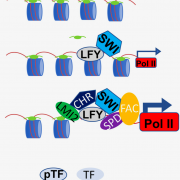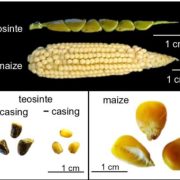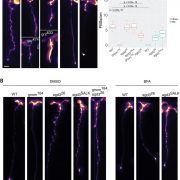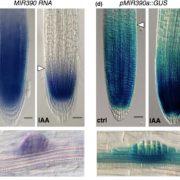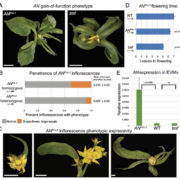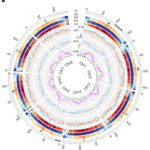Water fluxes contribute to growth patterning in shoot meristems
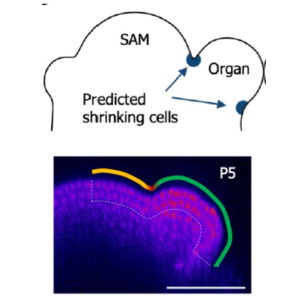 The shoot apical meristem (SAM) is a wonderous thing. How this tiny clump of cells generates the entire above-ground organ system regularly, predictably, and dynamically is a question that has been investigated for decades, with models incorporating cascades regulatory genes, diffusible peptides, hormone fluxes, cell wall properties, cytoskeletal patterns, and more. In this new preprint by Alonso-Serra et al., water fluxes are introduced as contributors to growth patterning. The authors used timelapse imaging to create a 3D cell volume map of the growing meristem, followed by imaging of a fluorescent dye that mimics water movement. They found that cells in the boundary layer (the fold between the meristem and the emerging primordium) actually shrink in the absence of cell division, while adjacent cells expand, consistent with water movement between cells. Their model predicts that the rapid expansion of the growing cells leads to a decrease in their hydrostatic pressure, creating a sink that draws water from neighboring cells. As the authors conclude, these findings “make water a patterning factor at the shoot apex acting in synergy with mechanical and biochemical cues.” (Summary by Mary Williams @PlantTeaching) bioRiv 10.1101/2023.08.27.554993
The shoot apical meristem (SAM) is a wonderous thing. How this tiny clump of cells generates the entire above-ground organ system regularly, predictably, and dynamically is a question that has been investigated for decades, with models incorporating cascades regulatory genes, diffusible peptides, hormone fluxes, cell wall properties, cytoskeletal patterns, and more. In this new preprint by Alonso-Serra et al., water fluxes are introduced as contributors to growth patterning. The authors used timelapse imaging to create a 3D cell volume map of the growing meristem, followed by imaging of a fluorescent dye that mimics water movement. They found that cells in the boundary layer (the fold between the meristem and the emerging primordium) actually shrink in the absence of cell division, while adjacent cells expand, consistent with water movement between cells. Their model predicts that the rapid expansion of the growing cells leads to a decrease in their hydrostatic pressure, creating a sink that draws water from neighboring cells. As the authors conclude, these findings “make water a patterning factor at the shoot apex acting in synergy with mechanical and biochemical cues.” (Summary by Mary Williams @PlantTeaching) bioRiv 10.1101/2023.08.27.554993



